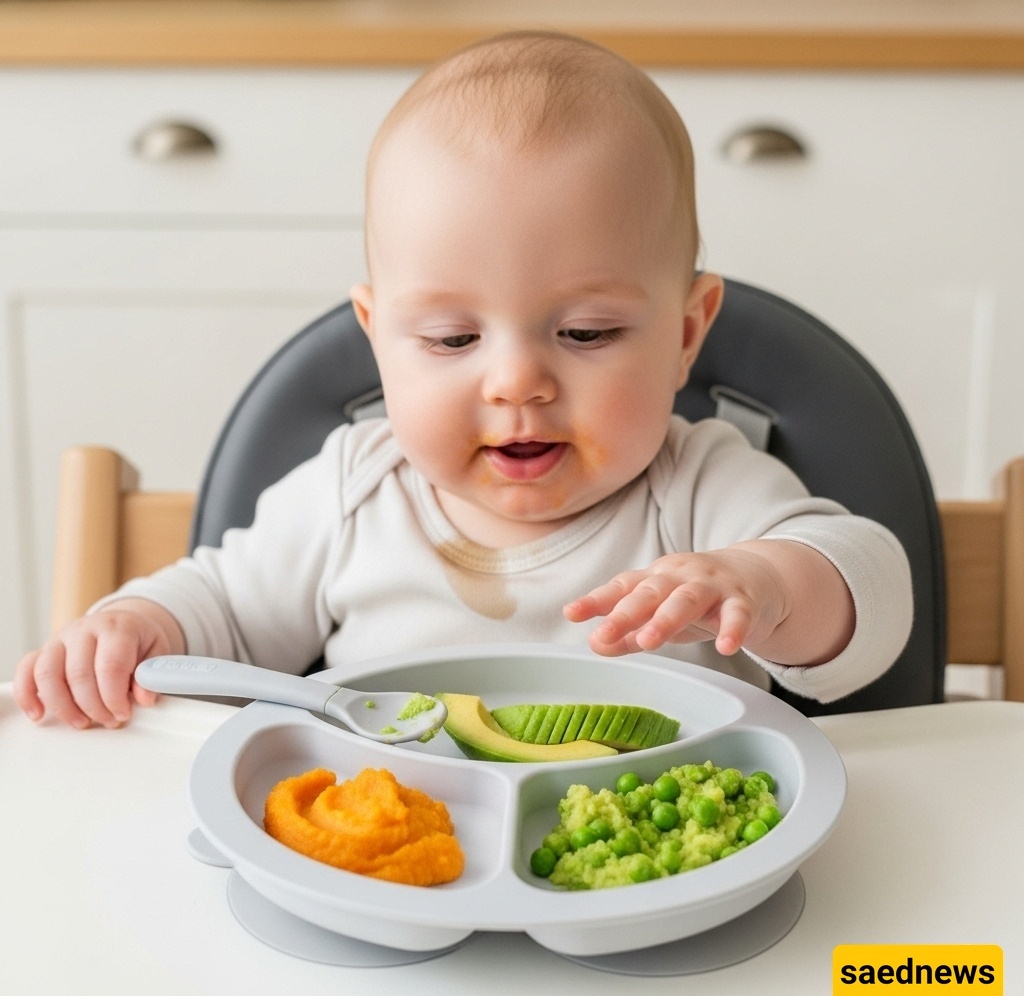SAEDNEWS: Introducing solids opens an exciting world for your baby. Learn the signs your little one is ready, the best first foods, tips for new flavors, and finger-food basics—all to build healthy habits and positive mealtime experiences.

According to the SaedNews Children’s Service, reaching six months of age and beginning complementary foods is one of the most exciting—and at the same time, challenging—stages in your baby’s growth and nutrition. Up to this point, breast milk or formula has met all of your baby’s nutritional needs. But now, it’s time for your little one to explore the fascinating world of new flavors and textures. This article provides a comprehensive guide for parents to confidently and knowledgeably choose their baby’s first foods, creating a positive and healthy experience.

Before introducing the first spoonful, make sure your baby is physically and developmentally ready. Look for these signs:
Head and neck control: Your baby can hold their head steady.
Ability to sit: They can sit with or without support for short periods.
Curiosity about food: They watch you eat with interest and may try to reach for your food.
Loss of tongue-thrust reflex: They no longer automatically push food out of their mouth and can move it inside and swallow.

Start with simple, single-ingredient, pureed foods. This allows your baby’s digestive system to adjust gradually and helps identify any food sensitivities.
1. Single-ingredient, nutrient-rich purees
Make sure these purees are smooth and easy to swallow. Adjust the consistency with a little breast milk or formula if needed.
Vegetables: Sweet potatoes, carrots, pumpkin, and peas (fully cooked and pureed).
Fruits: Mashed banana, apple puree, pear, and avocado.
Grains: Iron-fortified cereals or almond porridge made with breast milk or boiled water. Iron is a vital nutrient at this age.
2. Importance of iron for six-month-old babies
A baby’s iron stores, acquired during pregnancy, start to deplete around six months. Introducing iron-rich foods is crucial. Iron-fortified cereals and pureed meats (fully cooked chicken or beef) are excellent choices.

The “wait-and-watch” rule: Introduce each new food alone for 3–5 days, watching for allergic reactions such as rash, diarrhea, or vomiting.
Start small: Begin with one or two teaspoons per day and gradually increase.
Milk remains primary: Breast milk or formula continues to be the main source of nutrition until one year; solid foods are supplemental.
Timing: Offer solids when your baby is neither too hungry nor too tired, for example, about an hour after milk feeding.

Between six and eight months, as motor skills develop, you can introduce finger foods. This supports hand-eye coordination and encourages self-feeding.
Tips for safe finger foods:
Soft texture: Foods should be soft enough to mash easily between your fingers.
Appropriate size: Cut into pieces large enough for a baby to grasp safely.
Safe examples: Pieces of banana, soft avocado, steamed carrot or potato, and soft broccoli.

Honey: Strictly avoid under one year due to the risk of botulism.
Cow’s milk: Not suitable as a main drink before one year (small amounts in cooking are fine).
Salt and sugar: Babies’ kidneys can’t handle high salt, and sugar is unnecessary and harmful.
Choking hazards: Avoid whole nuts, whole grapes, popcorn, and other small, hard foods.
Feeding a six-month-old marks the beginning of lifelong healthy eating habits. Make this experience positive and stress-free. Respect your baby’s hunger and fullness cues and never force them to eat. Remember, every baby is unique and develops at their own pace. Be patient, enjoy this stage, and watch your child grow and flourish on this exciting journey.

